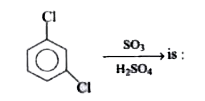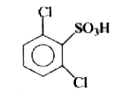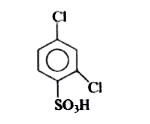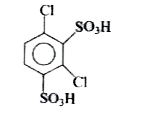The product obtained in the reaction of diborane with excess of ammonia at low temperature is:
B2H6.NH3
B2H6.2NH3
(BN)x
Borazine
The correct Answer is:B
To solve the question regarding the product obtained from the reaction of diborane with excess ammonia at low temperature, we can follow these steps:
Step 1: Write the chemical formula for diborane
Diborane is represented by the chemical formula B2H6.
Step 2: Identify the reactants
The reactants in this reaction are diborane (B2H6) and ammonia (NH3). Since ammonia is in excess, we will consider that in our reaction.
Step 3: Write the reaction equation
When diborane reacts with ammonia, the reaction can be represented as follows:
B2H6+NH3→?
Step 4: Determine the products
At low temperatures, diborane reacts with ammonia to form a complex. The expected product is:
B2H6+2NH3→B2H6(NH3)2
Step 5: Balance the reaction
To balance the equation, we note that there are 2 nitrogen atoms from 2 ammonia molecules and 2 boron atoms from diborane. The balanced equation is:
B2H6+2NH3→B2H6(NH3)2
Step 6: Identify the final product
The product formed is B2H6(NH3)2, which indicates that diborane forms a complex with two ammonia molecules.
Conclusion
The product obtained in the reaction of diborane with excess ammonia at low temperature is B2H6(NH3)2.
---
Diborane is represented by the chemical formula B2H6.
The reactants in this reaction are diborane (B2H6) and ammonia (NH3). Since ammonia is in excess, we will consider that in our reaction.
When diborane reacts with ammonia, the reaction can be represented as follows:
B2H6+NH3→?
At low temperatures, diborane reacts with ammonia to form a complex. The expected product is:
B2H6+2NH3→B2H6(NH3)2
To balance the equation, we note that there are 2 nitrogen atoms from 2 ammonia molecules and 2 boron atoms from diborane. The balanced equation is:
B2H6+2NH3→B2H6(NH3)2
The product formed is B2H6(NH3)2, which indicates that diborane forms a complex with two ammonia molecules.
The product obtained in the reaction of diborane with excess ammonia at low temperature is B2H6(NH3)2.
Topper's Solved these Questions
- P-BLOCK ELEMENT (BORON AND CARBON FAMILY)Book:RESONANCE ENGLISHChapter:P-BLOCK ELEMENT (BORON AND CARBON FAMILY)Exercise:Exercise-1 Part-II : ONLY ONE OPTION CORRECT TYPE Section (F) : Oxides, Oxyacids & Hydroxides ; Borax
Explore 10 Videos
- P-BLOCK ELEMENT (BORON AND CARBON FAMILY)Book:RESONANCE ENGLISHChapter:P-BLOCK ELEMENT (BORON AND CARBON FAMILY)Exercise:Exercise-1 Part-II : ONLY ONE OPTION CORRECT TYPE Section (G) : Halides, Alums & Other metal salts
Explore 15 Videos
- P-BLOCK ELEMENT (BORON AND CARBON FAMILY)Book:RESONANCE ENGLISHChapter:P-BLOCK ELEMENT (BORON AND CARBON FAMILY)Exercise:Exercise-1 Part-II : ONLY ONE OPTION CORRECT TYPE Section (D) : Chemical properties of elements (AI,Sn,Pb)
Explore 8 Videos
- P BLOCK ELEMENTSBook:RESONANCE ENGLISHChapter:P BLOCK ELEMENTSExercise:PART -II
Explore 23 Videos
- P-BLOCK ELEMENTS (HALOGEN & NOBLE GASES)Book:RESONANCE ENGLISHChapter:P-BLOCK ELEMENTS (HALOGEN & NOBLE GASES)Exercise:APSP PART-3
Explore 22 Videos
Similar Questions
Knowledge Check
 , Product obtained in the reaction is :ADiastereomerBRacemicCMesoDOptically pure enantiomer
, Product obtained in the reaction is :ADiastereomerBRacemicCMesoDOptically pure enantiomerThe major product obtained in the reaction
 A
A B
B C
C D
D
 Major product obtained in the reaction is : A
Major product obtained in the reaction is : A B
B C
C D
D






_S01_362_Q01.png)
